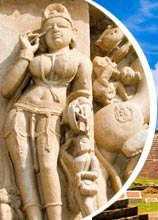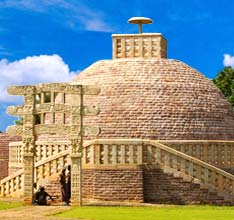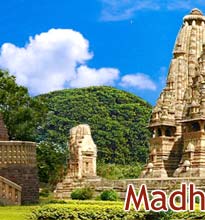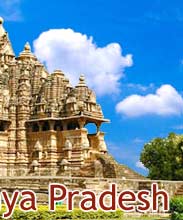 The
state of Madhya Pradesh is nothing but a treasure for all those who love
to experience jungle thrills and adventurous lookouts. The national
parks and sanctuaries of the state teem with some of the most
interesting wildlife species found in India. Apart from that, many
endangered species also have seen revival within their precincts.
Excitement lurks amidst the folds of these parks, in the form of tigers,
leopards, bisons, gaurs, deer and a wide variety of reptiles and birds.
In fact, the wildlife sanctuaries of Madhya Pradesh offer good
opportunities to watch wildlife, amidst natural locales.
The
state of Madhya Pradesh is nothing but a treasure for all those who love
to experience jungle thrills and adventurous lookouts. The national
parks and sanctuaries of the state teem with some of the most
interesting wildlife species found in India. Apart from that, many
endangered species also have seen revival within their precincts.
Excitement lurks amidst the folds of these parks, in the form of tigers,
leopards, bisons, gaurs, deer and a wide variety of reptiles and birds.
In fact, the wildlife sanctuaries of Madhya Pradesh offer good
opportunities to watch wildlife, amidst natural locales.Easily accessible from major towns and cities of the state, these sanctuaries and parks are prime draws as far as tourists visiting Madhya Pradesh are concerned. Moreover, the national parks of the state are well equipped with modern amenities like jeep safaris and comfortable lodging facilities, which boost tourist traffic to these places. If you are someone who has always thought of watching a tiger from close quarters, the protected jungles of the state are your best bet. To know more about the various national parks and wildlife sanctuaries of Madhya Pradesh, read on.
Kanha National Park
A land that inspired Rudyard Kipling to write his classic novel 'Jungle Book', the forested areas of Kanha, with their wild thickets of sal and bamboo forests, rolling meadows and dramatic ravines, are home to the Kanha National Park. The Created in 1955, the national park is today the core area of the Kanha Tiger Reserve.
Pench National Park
Pench National Park falls under the Seoni and Chhindwara districts of Madhya Pradesh. It derives its name from the Pench River that flows through its heart and divides it into two, equal western and eastern halves - Chhindwara and Seoni respectively.
Bandhavgarh National Park
A thick-forested land encompassed by bamboo and sal trees and wooded cliffs of the Vindhyas; Bandhavgarh National Park is one of the most exotic wildlife destinations in India. An erstwhile game reserve of the royal family of Rewa, Bandhavgarh got recognition as a wildlife park in 1968.
Panna National Park
Sheltered in the Indian state of Madhya Pradesh, Panna National Park is at a distance of around 57 km from the nearby temple-town of Khajuraho. Panna city is especially famous for its diamond industry. Nevertheless, what adds to the popularity of the place is Panna Wildlife Sanctuary.
Satpura National Park
Tucked away in the Satpura mountainous ranges, Satpura National Park rests in the Hoshangabad district of Madhya Pradesh. Set up in 1981, the park borrows its name from the Satpura hill ranges (Mahadeo Hills). An important wildlife sanctuary of India, the park shelters a rich biodiversity amidst its terrains.









